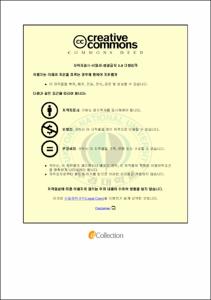뼈째썰기회의 원료 판별을 위한 도다리 및 유사어종과의 식품학적 특성비교
- Alternative Title
- Comparison in Food Quality between Finespotted Flounder and their Similar Kinds for Material Distinction in Raw Fish Sliced with Bones
- Abstract
- The Finespotted flounder sliced raw fish with bones, a representative raw fish in spring, is considered comparatively difficult to breed, which causes small Olive flounder and Stone flounder from China, similar kinds of flounders, to appear on the market for sale under the name of ‘Finespotted flounder’. The reason lies under the considerations that small Olive flounder and Stone flounder from China are relatively lower priced and in higher supply and demand, being difficult to distinguish from Finespotted flounders when sliced with bones. Thus, the purpose of my thesis is to distinguish Finespotted flounders from similar kinds of fish analyzing the lipid content in muscle tissue and SDS-PAGE (Sodium Dodecyl Sullipide - Poly Acrylamide Gel Electrophoresis). Upon comparing the main component of muscle tissue between Finespotted flounders and similar kind of fish, such as small Olive flounder and Stone flounder from China, we found that there are no noticeable differences among them in moisture content, and little, if any noticeable differences, in crude protein and crude ash content (P>0.05). The muscle tissue of Finespotted flounders contains 0.65±0.04% lipid contents whereas that of small Olive flounders contains 2.10± 0.16%, and that of Stone flounders fromn China contains, 1.95±0.10%, Therefore, both of these fish, show higher lipid content than Finespotted flounders (P>0.05). When mineral and heavy metal contents in the muscle tissue among Finespotted flounders and similar kinds of Finespotted flounders (small Olive flounder and Stone flounder from China)were compared, the result was no significant differences(P>0.05). In addition, although these results, including the analysis of fatty acids, can be varied according to such factors as prey or living environment, we can conclude from this result that no significant differences were observed. Thus it is partly concluded that one remaining component in the nutritional comparison, lipid contents in muscle tissue will discern between Finespotted flounders and similar kinds of fish. In comparison with the main component contents in muscle tissue between Finespotted flounders and similar types of fish, there are no significant differences in crude moisture and crude protein content, although noticeable by their sizes(P>0.05). In addition to discerning crude lipid content, the technique of SDS-PAGE was applied to discern between kinds of sliced raw fish with bones on the market. This result confirms that the muscle ‘band’ of sliced raw fish with bones on the market is similar to that of turbots purchased from two commercial raw fish houses around the Ulsan area and five houses around the Busan area. Our analysis shows that in lipid contents, there are significant differences in muscle tissue among Finespotted flounders, small Olive flounders, and Stone flounders. By using the SDS-PAGE technique, different levels of muscle tissue between them can be observed. However, the limitation on accurate distinction occurred, although the SDS-PAGE confirmed the differentiation of muscle among the Stone flounder, Finespotted flounder and small Olive flounder. Finally, this study distinguished the species of fish through the measurement of lipid contents in muscle and SDS-PAGE. After removing muscle tissue from sliced raw fish with bones which were purchased from normal commercial raw fish restaurants, the result of analyzing lipid content of muscle tissue shows that a noticeable difference in lipid contents was observable in the trustworthy range of 95%, forming 11 sub-groups in the following way. Sub-groups from A through D show lipid content of 0.56±0.09% to 1.19±0.02%, which leads to assume that real Finespotted flounders are sliced raw fish with bones. Sub-groups from F through I show lipid content of 1.75±0.07%∼2.23±0.13%, which leads us to assume that small Olive flounder and Stone flounder in China are sliced with bones. Based on these analyses, we have concludee that commercial raw fish restaurants sell small Olive flounder and Stone flounder in China under the name of Finespotted flounder. However, because variety of factors have influence our analyses, such as the individual characteristics of kinds of fish and seasonal varieties, the aim of our analysis to enhance more accurate distinction criterion, although some fish kinds can be discerned with our present technique of lipid content and SDS-PAGE. Through more sophisticated kind of analysis developed by consistent research, we look forward to attaining more accurate techniques for discerning between different kinds of similar raw fish.
- Issued Date
- 2010
- Awarded Date
- 2010. 8
- Type
- Dissertation
- Publisher
- 부경대학교
- Alternative Author(s)
- Kang Hyun Woo
- Affiliation
- 부경대학교 식품산업공학
- Department
- 산업대학원 식품산업공학과
- Advisor
- 조영제
- Table Of Contents
- 목 차
Abstract 1
서 론 4
재료 및 방법 7
1. 실험 재료 7
2. 실험방법 7
2.1. 일반성분 측정 7
2.2. 무기질․중금속함량 측정 7
2.3. 지방산 조성 측정 8
2.4. SDS 전기영동 8
2.5. 통계처리 9
결과 및 고찰 10
1. 도다리 유사어종의 생태학적 특성 및 일반성상 10
2. 도다리 유사어종의 식품학적 비교 15
2.1. 일반성분 비교 15
2.2. 무기질함량 비교 22
2.3. 중금속함량 비교 24
2.4. 지방산 조성 비교 27
3. 시판 뼈째썰기회 중 도다리회의 판별 30
3.1. 크기별 도다리 근육의 일반성분 30
3.2. 시판 뼈째썰기회의 SDS 전기영동을 통한 판별 32
3.3. 시판 뼈째썰기회의 지방함량을 이용한 판별 38
요 약 46
감사의 글 51
참 고 문 헌 52
- Degree
- Master
- Files in This Item:
-
-
Download
 뼈째썰기회의 원료 판별을 위한 도다리 및 유사어종과의 식품학적 특성비교.pdf
기타 데이터 / 861.97 kB / Adobe PDF
뼈째썰기회의 원료 판별을 위한 도다리 및 유사어종과의 식품학적 특성비교.pdf
기타 데이터 / 861.97 kB / Adobe PDF
-
Items in Repository are protected by copyright, with all rights reserved, unless otherwise indicated.